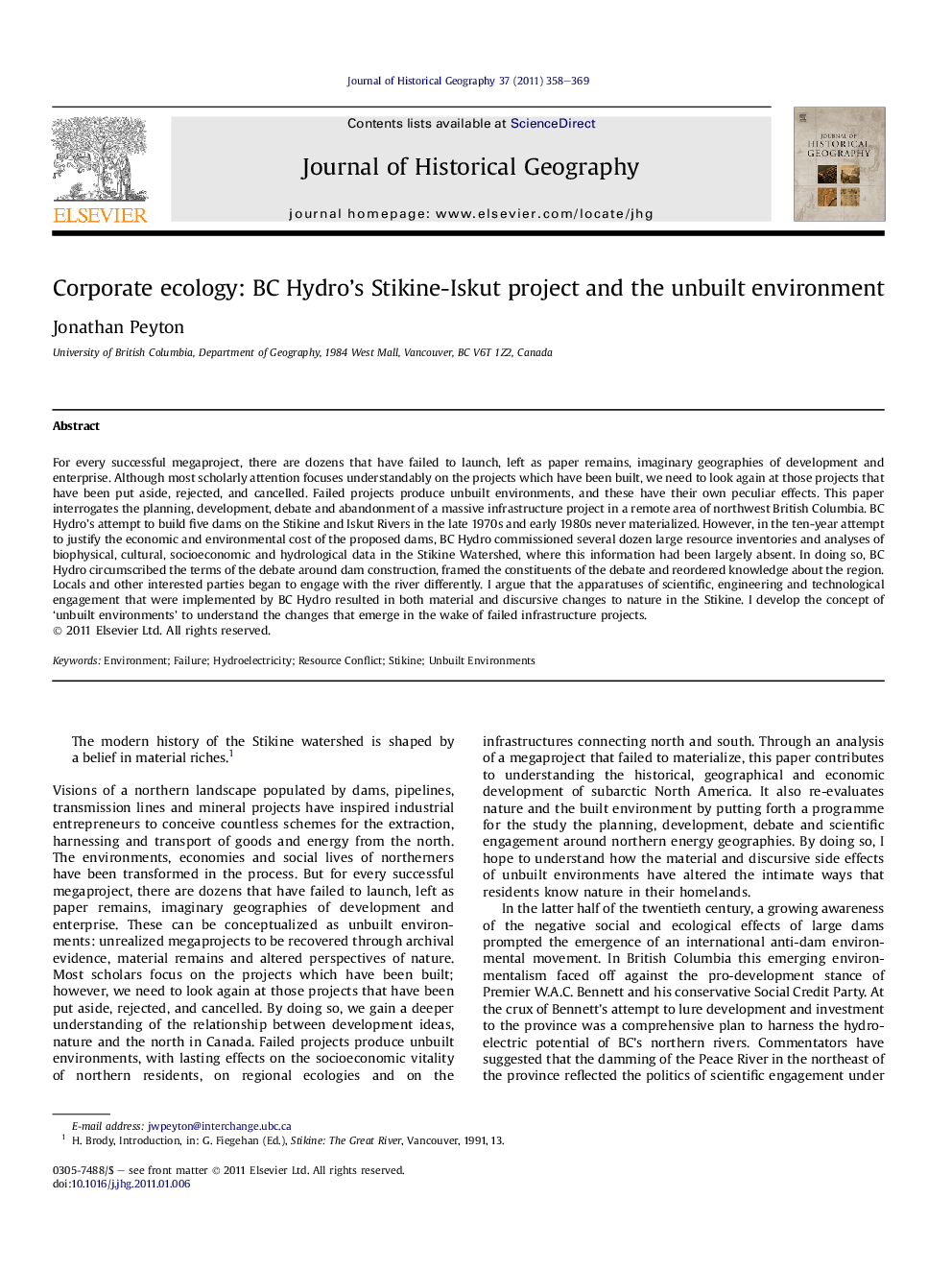| Article ID | Journal | Published Year | Pages | File Type |
|---|---|---|---|---|
| 1039454 | Journal of Historical Geography | 2011 | 12 Pages |
For every successful megaproject, there are dozens that have failed to launch, left as paper remains, imaginary geographies of development and enterprise. Although most scholarly attention focuses understandably on the projects which have been built, we need to look again at those projects that have been put aside, rejected, and cancelled. Failed projects produce unbuilt environments, and these have their own peculiar effects. This paper interrogates the planning, development, debate and abandonment of a massive infrastructure project in a remote area of northwest British Columbia. BC Hydro’s attempt to build five dams on the Stikine and Iskut Rivers in the late 1970s and early 1980s never materialized. However, in the ten-year attempt to justify the economic and environmental cost of the proposed dams, BC Hydro commissioned several dozen large resource inventories and analyses of biophysical, cultural, socioeconomic and hydrological data in the Stikine Watershed, where this information had been largely absent. In doing so, BC Hydro circumscribed the terms of the debate around dam construction, framed the constituents of the debate and reordered knowledge about the region. Locals and other interested parties began to engage with the river differently. I argue that the apparatuses of scientific, engineering and technological engagement that were implemented by BC Hydro resulted in both material and discursive changes to nature in the Stikine. I develop the concept of ‘unbuilt environments’ to understand the changes that emerge in the wake of failed infrastructure projects.
